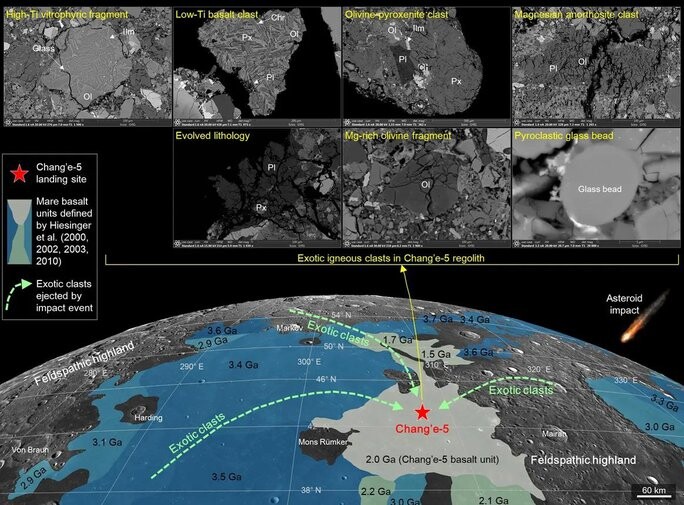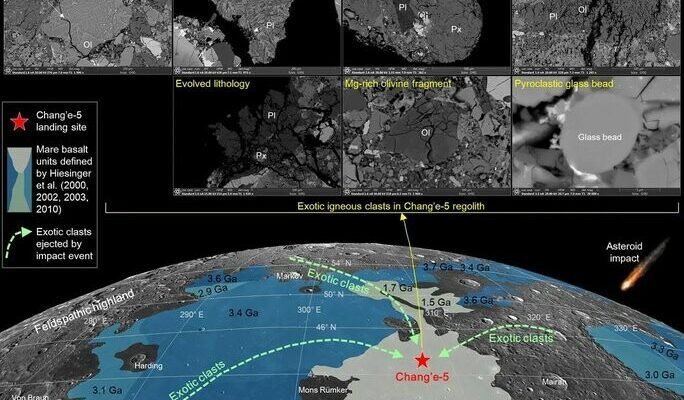China’s Chang’e-5 spacecraft has brought back to Earth unexpected treasures for science from the celestial body that mankind thought they understood quite well.
Analyzing more than 3,000 samples of regolith – a mineral-rich hydrated soil – that Chang’e-5 brought back from the Moon, a team of scientists led by Dr Xiaojia Zeng, Professor Xiongyao Li and Professor Jianzhong Liu from the Institute of Geochemistry of the Chinese Academy of Sciences have found seven strange clusters of igneous rocks, believed to be ejected by collisions.
According to SciTech Daily, by comparing them with lunar rocks returned by the US Apollo mission decades ago, researchers have identified three types of igneous rocks that exhibit lithological and structural features. abnormal.

The location of the Chinese ship landing and the strange specimens it brought back – Photo: Chinese Academy of Sciences
A titanium-rich vitrophyric may represent a new type of lunar basalt; the second is magnesium anorthosite debris that represents an important but unknown component of the Moon’s near-crust; The last type is pyroclastic glass that records a unique volcanic eruption.
These indicate that there may be an unknown world on the Moon with unusual geology and events that, unexpectedly, make the Moon’s lithology and magma activity much more diverse than previously thought. thought before.

The Moon is considered Earth’s time box, based on the theory that the ancient Earth and the hypothetical Mars-sized planet Theia crashed, shattered, and merged; The fragments then converged to form the Moon while the large body part gradually merged into the modern Earth.
Given the conditions of the Moon, the primitive elements that record ancient celestial evolution may still be there. Not to mention it’s the closest alien world, within reach of humanity. It was once suspected of harboring extinct ancient life and is where many space agencies plan to build bases. Understanding geology and celestial activities will serve both of these issues.

According to scientists, this new discovery not only provides more understanding about Earth’s satellites, but also provides data to guide future missions.
The study has just been published in the scientific journal Nature Astronomy.
Chang’e 5 or Chang’e 5, another name for Chang’e, is China’s lunar sampling mission, launched on November 24, 2020, and landed on December 1, 2020. and returned to Earth on December 16, 2020.



